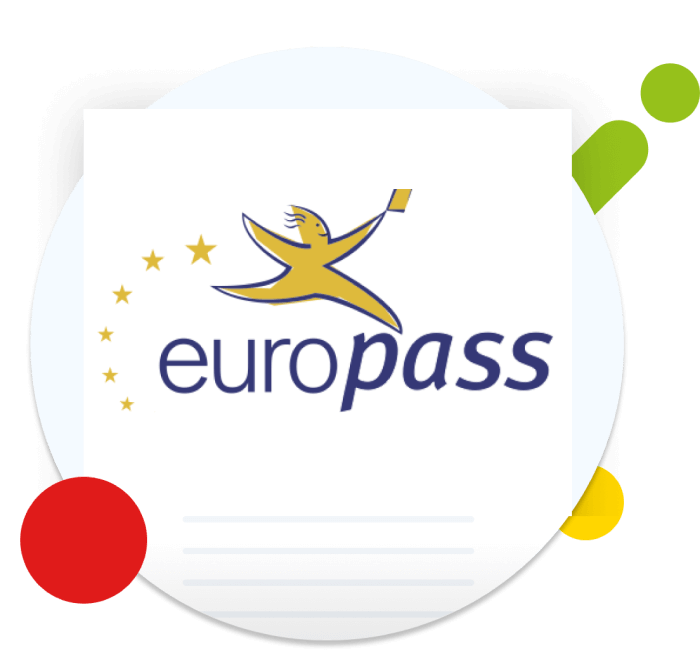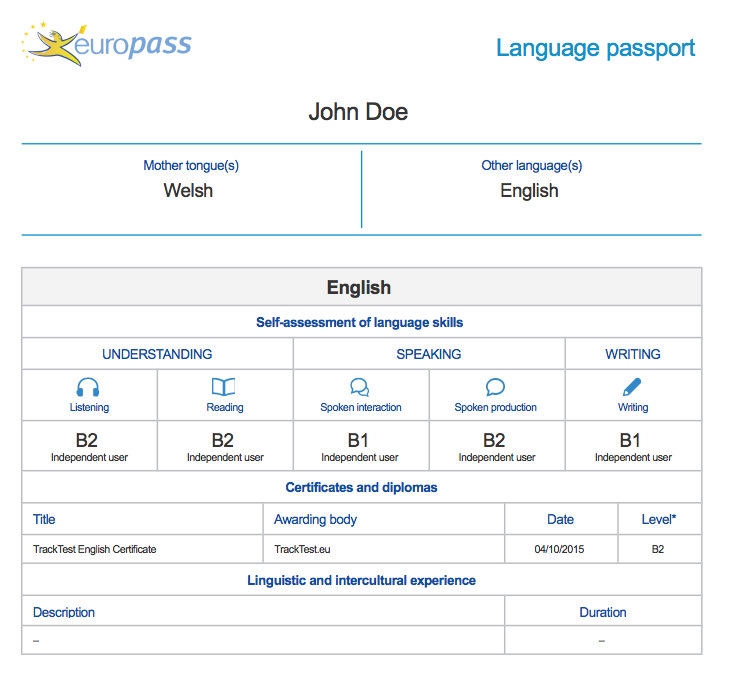Europass Curriculum Vitae (CV)
What is Europass CV
Europass Curriculum Vitae (CV) is a set of five documents prepared by European Union (Directorate General for Education and Culture) aiming to increase transparency of qualification and mobility of citizens in Europe.
For job seekers, their objective is to help communicate their skills and qualifications effectively when looking for a job or training.
For employers, it helps them to understand skills and qualifications of job candidates.
While sometimes criticised for excessive complexity, use of the Europass CV is recommended for the job selection process, especially in national and European Union governmental institutions.


Europass CV and Language Passport
Europass consists of five documents to make your skills and qualifications clearly and easily understood in Europe: Curriculum Vitae, Language Passport, Europass Mobility, Diploma Supplement and Certificate Supplement.
Language skills are defined in the first two documents- Curriculum Vitae (CV) and dedicated document describing the language skills called Language Passport.
European Union operates a dedicated website where you can create your CV online using tutorials or download the template, examples and instructions.
How to apply the language certificates in Europass CV Language Passport
Language Passport is a self-assessment tool for language skills and qualifications. It means that you are supposed to evaluate yourself based on CEFR descriptors.
You do not define an overall level of language (CEFR levels A1, A2, B1, B2, C1, C2) but your level for each language skill– Understanding (Listening and Reading), Speaking (Spoken Interaction and Spoken production) and Writing.
If you find the self-assessment difficult or you need also the independent proof of your English proficiency, you can use TrackTest English Level Test for online evaluation at which English level you are.
TrackTest English Level Test certificate result can be used in these Language Passport sections:
- Self-assessment grid of language skills. Use your Tracktest level section results (Reading, Listening, Speaking, Writing) if you have Meets or Above the level in your TrackTest English certificate.
- Certificates and Diplomas section. Fill in the title- Tracktest English Certificate, Awarding body – Tracktest English Assessment and your achieved English level. You may attach your TrackTest English Certificate to your job application as another attachment. Please note that results from the Placement pre-test cannot be used as the official certificate.

Pros and Cons of using Europass CV
Advantages
- It is an accepted format in the EU, which means that it is familiar to employers and can be easily understood by them.
- It is available in multiple languages, which makes it easier for individuals to present their qualifications to employers in different countries.
- It is free to use, which makes it an affordable option for individuals looking to create a professional CV.
Disadvantages
- It may not be as visually appealing as other types of CVs, as it follows a standardized format.
- It may not be as flexible as other types of CVs, as it requires individuals to fit their information into a specific template.
- It may not be suitable for certain types of careers or industries, as it may not allow individuals to highlight their skills and experience in the most effective way.
The Europass CV can be a useful tool if you are looking to present your qualifications in a clear and concise manner, especially for employment in the EU. However, you should always consider your career goals and the requirements of your target employers
Regardless you decide to use the Europass CV or another Curriculum Vitae template, proving your English proficiency skills with the independent CEFR certificate may increase your chances in the selection process.
Get your English certificate
compatible with Europass CV Language Passport
